Popiglio Watch Towers
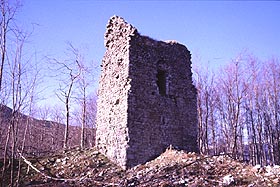 |
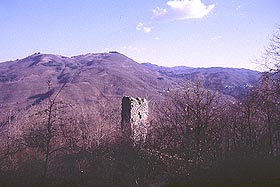 |
|
The first tower, at the top of the mountain.
|
The other tower viewed from the first tower.
|
Popiglio rises in the heart the Pistoiese Mountain along the road SS12 of the Abetone and the Brennero. From Pistioa it is reachable following the SS66 until S.Marcello Pistoiese, then La Lima and following the indications towards Lucca. After a kilometer our right will find the signal for the little road that guide us up to the the 'Torri'. From Lucca we follow the SS12 and passed the country of Popiglio we continue until finding on the left the aforesaid crossroad (not very marked from this direction).
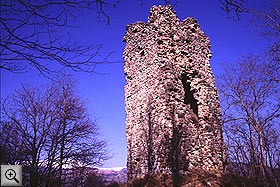 |
|
The second tower.
|
This zone of the Pistoiese Mountain, the high valley of the Lima river, belonged to the counts Guidi of Modigliana who possessed the castles of Popiglio and Piteglio, as it emerges from the imperial diplomas of Arrigo VI° of the year 1191 and Frederick II° of the years 1220 and 1247. Later the area was subjected to the power of the near town of Pistoia and the two castles had the same 'Podestà'. The northern side of the valley is dominated by Popiglio. The 'castrum de Popilio' is named since the high Middle Age, even if the only certain notice is those relative to its belongings to the counts Guidi. As said the castle was dominated from the Pistoiesi and then became part of the territories of the Florentine Republic.
In the village of Popiglio there are no more traces of the ancient fortifications and of the town-walls that enclosed it, while on the vertex of the overlooking mountain still rises two powerful towers, a time leaves of the defensive system of obstruction of the valley.
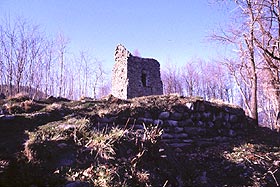 |
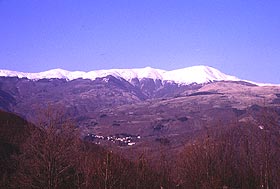 |
|
The main tower with the scarce rests of the encircling
walls.
|
The landscape from the towers
|
The 'Torri di Popiglio' (Popiglio Watchtowers) have both square shape and rise to various quotas at short distance one from the other: the most elevated to the vertex, the other about twenty meters down. The first tower, partially collapsed, rise today for approximately the half of its original height and very scarce rest of the walls of elliptical shape that encircled it still remains. Probably to the inside of this curtain rose other buildings, as we can imagine from the rests of a leaned construction on the north east side, and this was surely the seat of the command of the entire defensive system.
The other tower did not have additional fortifications, probably acted
as intermediate connection between the country and the main point of the
defensive system, it is strongly ruined but its remnants are today higher
than those of its 'twin'. From this position we can admire an unique landscape
on the Apennine Mountain and dominate the entire underlying valley.
| Back to Homepage |
| Back to Castles Index |